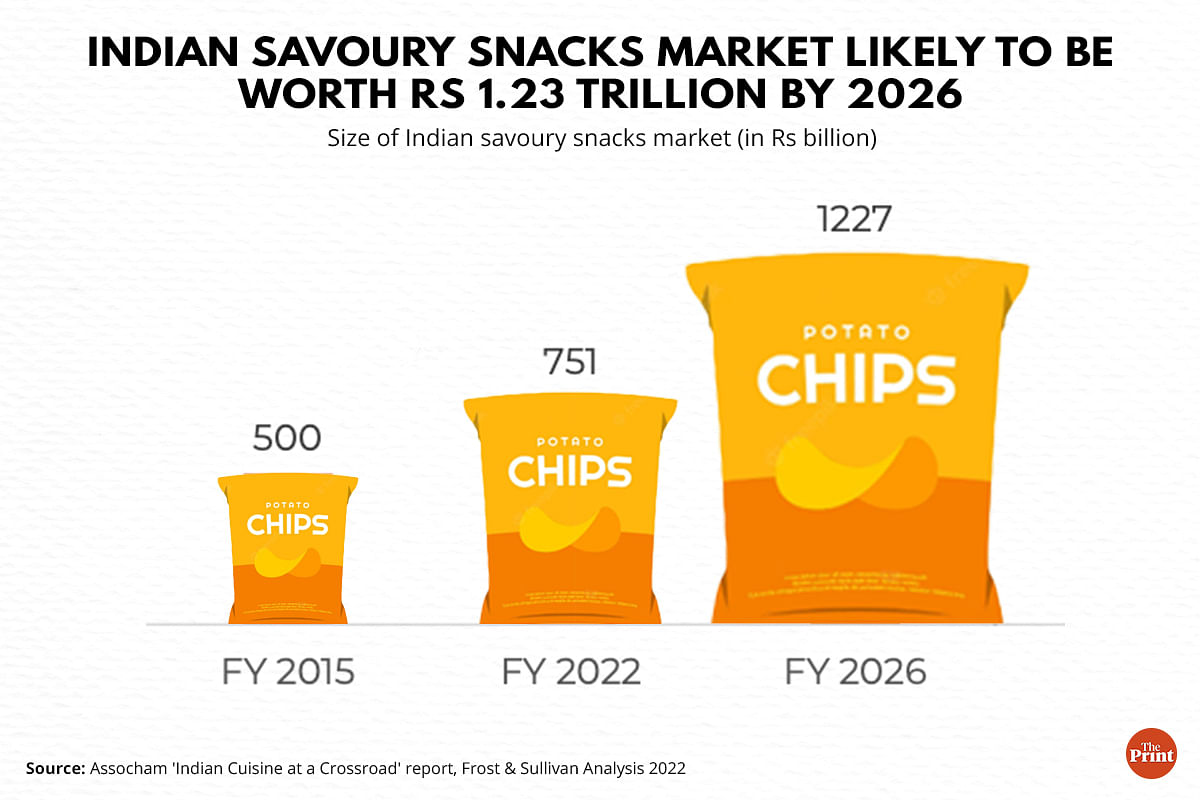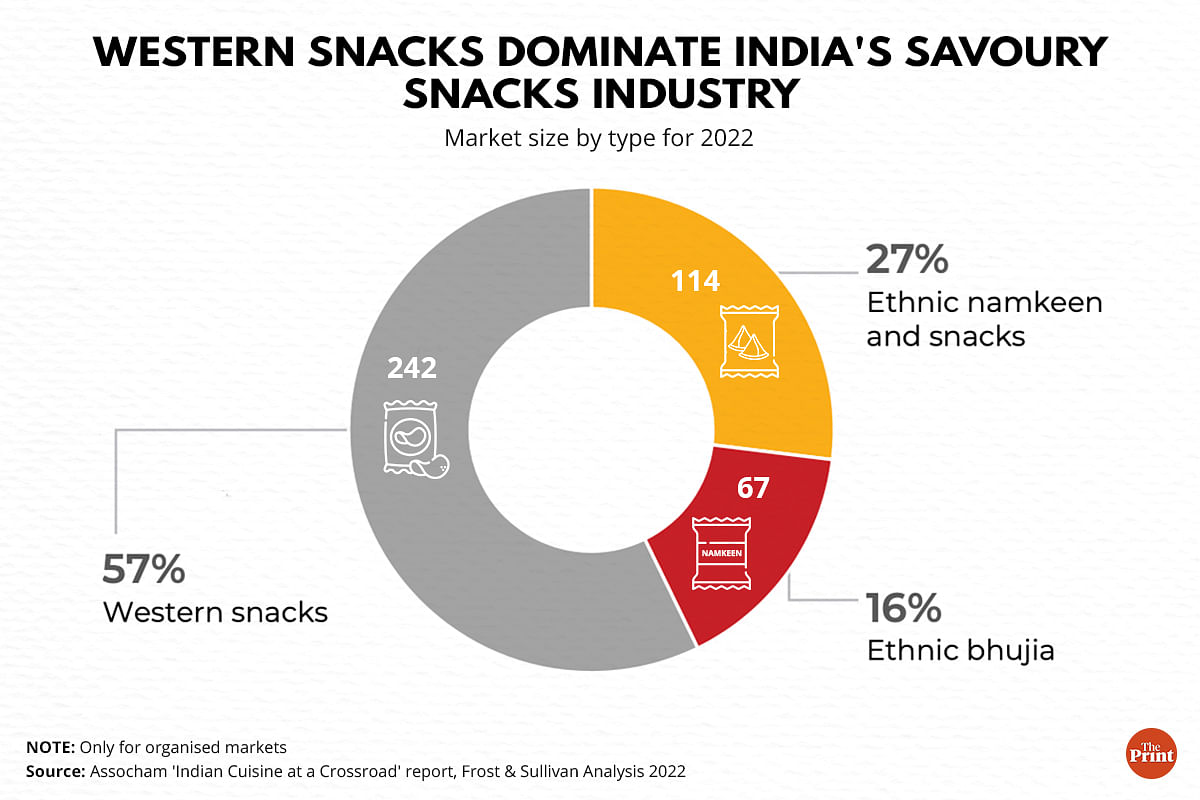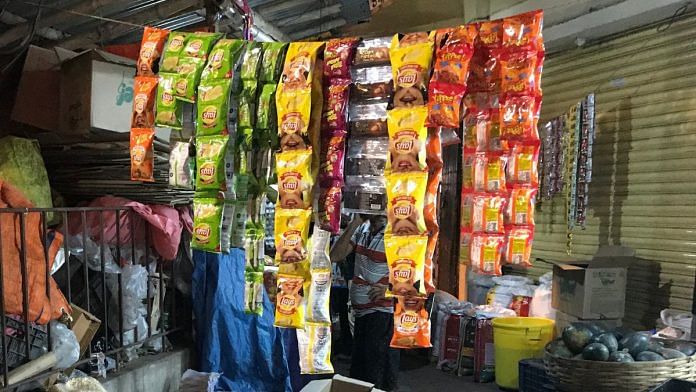New Delhi: Chips and nachos or bhujia and chaklis? The verdict is out: Indians prefer ‘western’ snacks over ‘traditional’ ones. However, the trend is all set to change.
In its latest report titled ‘Indian Cuisine at Crossroad’, the Associated Chambers of Commerce and Industry of India (Assocham) cited statistics that showed that while the Indian savoury snack market has grown bigger over the past 8 years, it largely remains dominated by what are called ‘western’ snacks.
The value of India’s savoury snacks industry grew from Rs 500 billion (Rs 50,000 crore) in the financial year 2015 to around Rs 751 billion (Rs 75,100 crore) by FY2022.
According to the report, of the Rs 751 billion, about Rs 423 billion (Rs 42,300 crore) lies in the organised sector (well-packed, labelled, branded). Within this, western savoury snacks — with a value of Rs 242 billion (Rs 24,200 crore) — dominate, making up about 57 per cent of the total organised savoury snacks market.

The report also mentioned that the savoury snack industry is likely to grow by 13 per cent (compounded annually) till 2026 and is expected to reach a value worth Rs 1.23 trillion (Rs 1,22,700 crore) by that year.
Also Read: You thought North consumes more ‘doodh’ & ‘dahi’? Nope, South India does, say NFHS findings
Dominance of western snacks
India offers a plethora of packaged savoury snacking options, which are classified broadly into traditional and western categories.
The western ones, according to the report, include chips, extruders (corn-based snacks, puffs, rings etc.) and bridges (like nachos and Kurkure).
The traditional ones include namkeens, bhujias, dry samosas, kachoris and chakli etc.
Within the Rs 423 billion organised market, the ethnic bhujia is worth Rs 67 billion (Rs 6,700 crore), accounting for about 16 per cent. Other namkeens and snacks like packaged dried samosas, kachoris and non-bhujia items constitute Rs 114 billion (Rs 11,400 crore), or 27 per cent, of the organised market.

The report mentions that the organised traditional savoury snacks (non-bhujia items) which are worth Rs 114 billion, could actually grow by a 16 per cent compounded annual growth rate and can reach a value of about Rs 204 billion by 2026.
The growth of dried ethnic snacks (non-bhujia items) in packaged products is all set to change the trend of higher consumption of ‘western’ snacks, the report says.
“Despite dominance by the Western savoury snacks, the organised traditional snacks market has grown in maturity in recent years, and is likely to pick up even further as new products are getting added to the product range which not only appeal to the Indian taste palette but also showcase many of the superior product (technical) aspects including good quality & nutrition,” the report said.
“This has resulted also due to improved packaging and sales practices which now allows companies to develop processes to increase the shelf-life of traditional foods while retaining the authentic flavour profile of the food. Typical examples are bhakarwadi, samosas, Bhel Puri by Haldiram’s, Aam Panna by PaperBoat, packaged coconut water, etc. This trend is expected to continue…” the report added.
(Edited by Anumeha Saxena)
Also Read: 2 out of 3 households in Delhi-NCR believe milk they are consuming is not pure, finds survey



